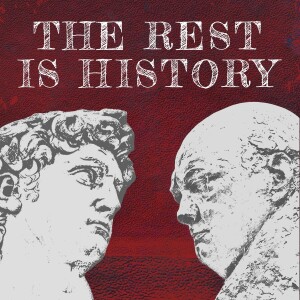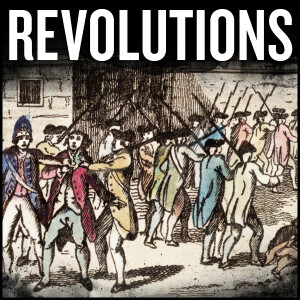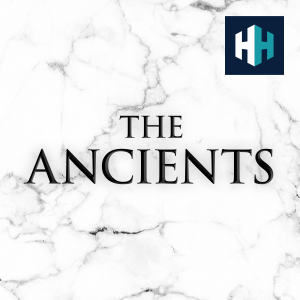

Episode List

The Pilgrimage of Grace: When England Fought the Reformation
When 50,000 northerners marched under their banners in 1536, England witnessed its largest rebellion since the Peasants' Revolt. The Pilgrimage of Grace wasn't merely a protest—it was a defining moment that threatened to unravel the English Reformation and return the kingdom to Rome.Professor Peter Marshall, renowned Tudor historian from Warwick University, takes us deep into this extraordinary episode where religious devotion, political power, and regional identity collided with explosive results. Henry VIII's desperate quest for a male heir led him to break with Rome, setting off changes that rippled far beyond the royal bedchamber. What began as a "change of the English Church's CEO" rapidly transformed into something more radical—monasteries dissolved, shrines dismantled, and traditions questioned. For northerners especially, these weren't abstract theological matters but direct attacks on community identity.When the rebels and royal forces faced off across the River Don, England's religious future hung in the balance. A providential rainstorm, false royal promises, and factional divisions among the rebels ultimately preserved Henry's reformation. Peter is brilliant in exploring the paths that led to the English reformation and to the rebellion that came within a whisker of stopping it in its tracks and tumbling Henry from his throne.You can send a message to the show/feedback by clicking here. The system doesn't let me reply so if you need one please include your email.

Byzantium and the First Crusade
The story of the First Crusade isn't simply one of religious fervor or military conquest – it's a tale of desperate empires, complex political maneuvering, and unlikely alliances that would reshape medieval history. When Byzantine Emperor Alexius I found his thousand-year-old empire crumbling under Turkish advances in the late 11th century, he made an unprecedented move that would change the course of history: he asked the West for help.What followed was extraordinary. Pope Urban II's call at the Council of Clermont in 1095 unleashed an avalanche of armed pilgrims, knights, and nobles who descended upon Constantinople with a mixture of religious zeal and worldly ambition. From this magnificent yet vulnerable city – positioned at the crossroads of Europe and Asia – Emperor Alexius faced the delicate task of channeling this unpredictable Western force toward his enemies while maintaining control over his own destiny.Through fascinating firsthand accounts, including the remarkable history written by Alexius's daughter Anna Komnene (the first long-form narrative by any European woman), we discover how the Emperor showered crusade leaders with gifts while extracting oaths of fealty. We witness the crusaders' stunning military successes against Turkish forces at Nicaea and Dorylaeum, followed by the grueling siege of Antioch that nearly broke them. And we see how Alexius's fateful decision not to march to their aid at Antioch planted seeds of distrust that would eventually bear bitter fruit in the catastrophic Fourth Crusade a century later.The Byzantine perspective on the First Crusade reveals a sophisticated diplomatic dance that initially saved the empire, restoring significant territories and ushering in a period of stability known as the Komnenian Restoration. Yet it also set in motion forces that would eventually contribute to Constantinople's downfall. You can send a message to the show/feedback by clicking here. The system doesn't let me reply so if you need one please include your email.

Shattered Jewels - Japan's Path to War (3 and final)
What makes a nation launch an attack it cannot hope to win? Admiral Yamamoto, who planned the Pearl Harbor attack, warned Japan's leadership they would have only six months before America would mobilize its entire continent to destroy them. He was right, but his warning was ignored.The episode starts with a discussion about the controversial Yasukuni Shrine and museum, where we gain insight into how Japan's military establishment viewed their expansionist ambitions. This museum is not just a collection of artifacts, but a repository of the attitudes that drove a nation to catastrophe.From the initial stunning successes across Asia to the turning point at Midway, we trace how Japan's military philosophy of "better to be a shattered jewel than an intact roof tile" led to extraordinary casualties. The Japanese leadership's desperate hope that inflicting maximum casualties would force America and its allies to accept a negotiated peace collapsed under the weight of industrial warfare and, ultimately, atomic devastation.We asked when the bitter feelings resulting from the conflicts that made up Japan's wars in the Pacific might fade. Jonathan suggest the following might help in trying to answer this. "Everyone periodizes history in their mind into three different categories: everything from Adam and Eve to my grandfather, what happened from my grandfather to me, and what happened in my own lifetime." Join us for this conversation about the decisions that led to war, the mindsets that prolonged it, and the complex legacy that continues to influence international relations in East Asia today.You can send a message to the show/feedback by clicking here. The system doesn't let me reply so if you need one please include your email.

Manchuria to Pearl Harbor: Japan's Path to War (2)
How did Japan become embroiled in one of history's deadliest conflicts? The answer lies not in December 1941, but decades earlier. Jonathan Clements returns to unravel the forces that propelled Japan down a path to war with the world's greatest industrial power.Following Japan's victory in the First Sino-Japanese War, the country emerged with new confidence only to face the humiliation of the Triple Intervention, when European powers forced them to surrender their hard-won territories. This sparked a determination to secure Japan's place among world powers, leading to their stunning defeat of Russia in 1904-1905 – a conflict Clements describes as "World War Zero" for its preview of technologies that would dominate WWI battlefields. The narrative takes us through Japan's growing reliance on Manchuria, transformed into the puppet state of Manchukuo under the last Chinese emperor. Here we discover the industrial heartland that supported Japan's imperial ambitions while exploring the darker realities of colonial rule. Perhaps most fascinating is Jonathan's exploration of Japan's internal dissent, from brave parliamentarians like Saito Takao who questioned the endless China conflict to the telling detail of restaurants suddenly serving only squid – a sign the fishing fleet had been devastated by war.As economic pressure mounted in 1941, we witness the fateful deliberations that led to Pearl Harbor, including Admiral Yamamoto's reluctant planning and prescient warning about "waking the American dragon." Through meticulous research and compelling storytelling, Jonathan shows how resource dependency and strategic miscalculations drove Japan toward a confrontation it couldn't win.You can send a message to the show/feedback by clicking here. The system doesn't let me reply so if you need one please include your email.

An Alien Game: Japan's Path to War (1)
The transformation of Japan from hermit kingdom to imperial power happened with breathtaking speed. When American Commodore Perry's "black ships" steamed into Tokyo Bay in the 1850s, they shattered Japan's 250-year isolation with technology that seemed to come "from 200 years in the future." This technological gap created a constitutional crisis that would ultimately topple the Tokugawa Shogunate and usher in the Meiji Restoration of 1868.Jonathan Clements guides us through this pivotal period where Japan found itself facing what one historian calls "an invitation to an alien game" - forced to adopt international norms and institutions they never agreed to. Rather than becoming colonized like China or India, Japan's new leaders determined to become players in this global power game. They systematically studied Western nations, adopting what they perceived as the best elements of each: a German-style army, British naval technology, and aspects of French law.This selective modernization happened against a backdrop of growing militarism and expansionism, particularly toward Korea - strategically described as "the dagger at the heart of Japan." The 1894-95 Sino-Japanese War demonstrated Japan's new capabilities, but the subsequent "Triple Intervention" by Russia, France and Germany (forcing Japan to abandon territorial gains) created a humiliation that would fuel future aggression.Throughout this period, the Japanese government struggled with "gekokujō" - military insubordination where officers initiated "incidents" that expanded Japanese influence without authorization. The assassination of Korea's Queen Min by Japanese agents exemplifies this dangerous pattern where unauthorized actions expanded imperial control while undermining civilian government - creating precedents that would ultimately lead Japan toward its catastrophic Pacific War.Whether you're interested in East Asian history, imperial expansion, or the roots of 20th century conflict, this exploration of Japan's rapid transformation reveals how quickly a nation can reinvent itself - for better or worse.You can send a message to the show/feedback by clicking here. The system doesn't let me reply so if you need one please include your email.
Create Your Podcast In Minutes
- Full-featured podcast site
- Unlimited storage and bandwidth
- Comprehensive podcast stats
- Distribute to Apple Podcasts, Spotify, and more
- Make money with your podcast












